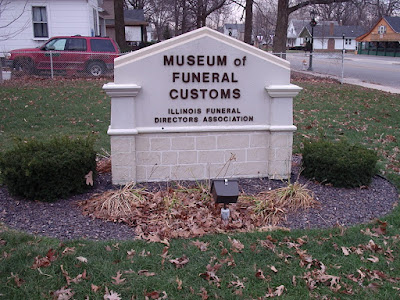Also in 1861, he married Amelia Beidelman, the oldest of ten children born to William and Eliza Beidelman who arrived in Naperville around 1847. Of course, the Civil War was just starting during this time and Fred was drafted in 1863, serving in the 49th Infantry, and was mustered out as a sergeant.
Fred and Amelia’s only child, Charles, was born in 1868 and the family enjoyed being active members of the town. Naperville’s fledgling fire department started in the 1870s and Fred became a volunteer of Rescue Hook and Ladder Company in 1875.
During those days, woodworkers made coffins as well as furniture, as described in his advertisement. Fred also served as an undertaker and attended mortuary school in the 1880s to expand his business even further.
Fred and Amelia’s only son, Charles, died at age 30, married, but childless. One of Amelia’s nephews, Oliver Beidelman, who was already working with Uncle Fred, wound up taking over the furniture and the undertaking businesses, passing both along to other family members. It was Oliver who, along with his son “Dutch,” built the brick Beidelman’s Furniture store that is currently on the corner of Washington Street and Jackson Avenue, replacing the shop pictured in the 1874 Atlas. While the funeral parlor space there is still visible, the Beidelman funeral business moved to another downtown location and one in south Naperville.
By 1911, Fred’s health was failing and his nephew was running the business. He was cared for by Amelia and her sister Ella until his death in 1912 at age 74. The sisters lived together until Amelia died in 1922 and her Beidelman relations continue their business pursuits in Naperville today.




















